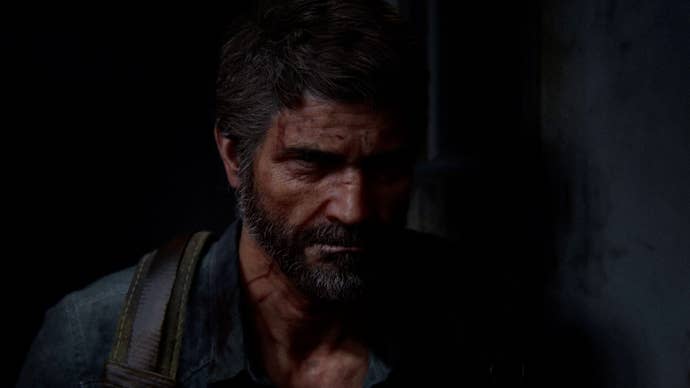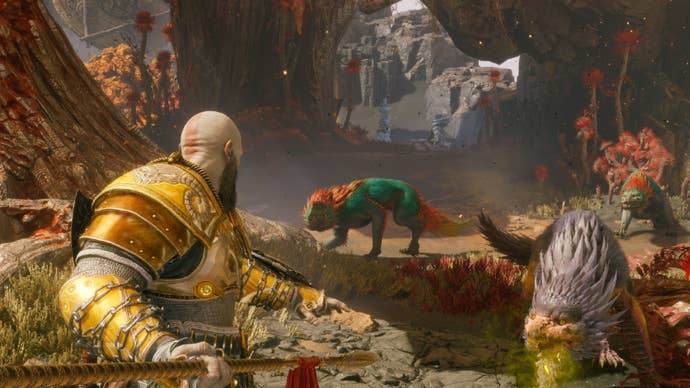Products You May Like
If you follow broader industry trends, particularly when it comes to the types of games every publisher is keen to have in their catalogues (before they realise it may not be such a good idea to invest so much in one basket), you’ll definitely be familiar with Sony’s nascent push into live service games.The company’s efforts are still so much in their infancy that we’re only now getting the first of its 12 planned games. Even well before we could play a single one, Sony delayed half of them. Whether or not anyone cares about the games themselves, the desire to diversify PlayStation’s first-party output is easy to understand. Sony is keenly aware that making increasingly expensive single-player games is not going remain sustainable for long – it already barely is.
One way to go about achieving that goal is to bring PlayStation games to other platforms, a bridge Sony already cross. The once historic stance against publishing first-party games on anything but PlayStation hardware has already been reversed. We now live in an era of PS5/PS4 exclusives landing on PC quite predictably two years after their debut on PS consoles.
But it’s clearly not enough, especially if Sony continues to pretend Xbox, and Nintendo platforms won’t offer meaningful growth in sales. Which brings us back to the other prong to the strategy: live service games.
Let’s, however, imagine for a moment that desire to figure out live service didn’t exist, and the company’s many studios had to come up with new ways to compel players to stick with games designed to be played once for longer than a single playthrough – and potentially open them to the idea of other forms of monetisation in those single-player games.
It turns out, they may already have.
One of the bigger surprises at December’s The Game Awards was the reveal of God of War Ragnarok’s Valhalla DLC, a free – and unusual – piece of extra content that expands the main game, not simply adding new story chapters, but introduce something that’s meant to be played repeatedly for a while to come. Valhalla is a rogue-lite mode that succeeds in so many ways it’s worth highlighting, and for Sony’s other teams, worth learning from.
It builds on Ragnarok’s narrative, giving anyone who typically plays those games for their story a reason to care. It relies on elements that build on the conclusion of the story, as well as those from Kratos’ past that the rebooted series rarely explored. It’s both old and new, it’s brilliant.
Meanwhile, Valhalla’s gameplay can comfortably sit right alongside the main game. If you felt empowered by the game’s weapon variety, all three weapons are immediately unlocked in Valhalla. Rather than build your character over two dozen hours, craft the gear you like and unlock bigger and better moves, Valhalla chucks all of those ingredients into a hat and – much like any rogue-lite – randomly pulls out some of them and lets you choose. It’s the reverse of the item discovery process rogue-lite/like games go through, as you’re likely to have used most of those skills during your main playthrough.
If you found combat exciting, Valhalla is essentially nothing but combat encounters, interspersed with bits where that bonus narrative can organically exist. This is still the same action you’re used to, but it’s made more exciting because of the fact you’re never quite sure what you’re going to run into, and what sort of skills/upgrades you’ll be choosing from.

Elsewhere in Sony’s catalogue, there’s a rogue-lite survival mode coming with The Last of Us Part 2 Remastered, and though it appears to be purely based on combat (and you could argue antithetical to the game’s message about the cycle of violence), it’s clearly cut from the same cloth Valhalla is.
Even before either of those became reality, Ghost of Tsushima quietly waded into the same territory with its Legends mode. Though it was more explicitly targeted towards co-op, it absolutely made me reinstall the game.
More than that, all three modes rely on assets that largely already exist, and leverage systems and mechanics players are already familiar with, and might even enjoy in isolation.Could this be a way to smartly, not to mention organically, extend the time PlayStation first-party game spend in our collective consciousness? I think each can easily make a compelling case.
My only worry is that, Sony likely believes that players will find it more palatable to see paid microtransactions in those modes. Adding those to the main portion of the games is something that would face a much harsher pushback, and Sony knows that. While we’re obviously not there yet, it’s clear that those kinds of modes will continue to exist as another potential avenue to extend the lives of its games, and potentially make a little bit of money in the process to supplement their rising costs.
